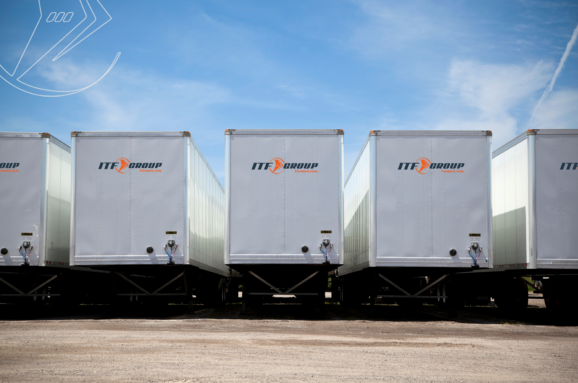The Basics of Third-Party Logistics
In modern logistics, the intricate dance of supply chains, trucks, and cargo is a symphony orchestrated by the professionals behind the scenes—third-party logistics providers (3PLs). These heroes of the transportation industry play a pivotal role in ensuring goods are delivered efficiently and on time. , we’ll take a deep dive into the fundamentals of 3PLs, exploring how they impact the daily movement of cargo, the services they provide to shippers and carriers, their revenue generation, challenges in the era of automation, and the transformative power of digital freight brokers.
3PL’s Sell More Than Freight
Imagine a freight broker as the conductor of this logistics orchestra. Their primary function is to act as intermediaries between shippers and carriers. Freight brokers are experts in the complexities of transportation logistics, and they leverage their industry knowledge and extensive networks to match cargo with the right carriers, ensuring cost-effective, timely, and safe deliveries.
Freight brokers influence cargo movement by:
- Negotiating rates: They work with both shippers and carriers to establish mutually beneficial pricing, taking into account factors such as cargo type, distance, and demand.
- Routing and scheduling: Freight brokers decide the best routes, modes of transportation, and schedules to optimize efficiency.
- Problem-solving: When unexpected issues arise, such as weather-related delays or mechanical breakdowns, freight brokers step in to find solutions and minimize disruptions.
- Services Provided by 3PLs
Third-party logistics providers offer a wide array of services to shippers and carriers. These services go far beyond simple matchmaking and encompass:
- Transportation Management: 3PLs streamline the entire logistics process, from planning and execution to tracking and reporting. They provide visibility into shipments and help manage carrier relationships. ITF Group utilizes transportation management systems such as Ditat to book freight.
- Warehousing and Distribution: Many 3PLs operate warehouses and distribution centers, offering storage solutions, order fulfillment, and inventory management services.
- Freight Forwarding: International shipping often requires navigating complex customs regulations and documentation. 3PLs handle these challenges, ensuring goods move seamlessly across borders.
- Supply Chain Consulting: 3PLs provide expertise in optimizing supply chain strategies, helping clients reduce costs, enhance efficiency, and minimize risks.
Revenue Generation and Cost Breakdown
3PLs generate revenue through various channels, and it’s important to understand how these providers sustain themselves while offering valuable services to shippers and carriers.
Revenue streams for 3PLs include:
- Brokerage fees: These fees are earned through brokering freight shipments between shippers and carriers. They are typically a percentage of the total shipping cost.
- Warehousing fees: If a 3PL manages warehousing and distribution, they earn fees based on storage space used and services provided.
- Consulting fees: For supply chain consulting services, 3PLs charge consulting fees based on the complexity and scope of the project.
On the other hand, shippers and carriers incur costs related to transportation, warehousing, and consulting services. These costs can vary widely based on factors such as distance, cargo type, and service level.
Challenges in the Era of Automation
As automation and technology continue to reshape the logistics industry, 3PLs face several challenges:
- Increased Competition: Automation has lowered barriers to entry, leading to a more crowded marketplace where startups and tech-driven companies challenge traditional 3PLs.
- Data Security: With increasing reliance on digital systems, ensuring the security and privacy of sensitive logistics data becomes paramount.
- Skill Set Evolution: The workforce within 3PLs needs to adapt to new technologies, requiring training and upskilling to remain competitive.
- Demand for Speed: Customers now expect faster deliveries, which can strain 3PLs’ capabilities to meet these expectations.
The Role of Technology and Digital Freight Brokers
In response to these challenges, technology is rapidly transforming the 3PL landscape. Digital freight brokers are at the forefront of this revolution, utilizing cutting-edge platforms and algorithms to match shippers and carriers with unprecedented speed and accuracy.
Key technologies and trends include:
- AI and Machine Learning: These technologies enable real-time decision-making, route optimization, and predictive analytics, leading to more efficient operations.
- Blockchain: Blockchain can enhance transparency and traceability in the supply chain, reducing fraud and errors.
- IoT (Internet of Things): IoT devices and sensors provide real-time tracking and monitoring of cargo and assets, improving visibility and security.
- E-Commerce Integration: 3PLs are integrating with e-commerce platforms to meet the demands of online retail and last-mile delivery.
Conclusion
In the complex world of logistics, third-party logistics providers serve as the linchpin that keeps the supply chain moving smoothly. Their role in brokering freight, managing transportation, and leveraging technology is vital for businesses looking to thrive in an increasingly automated and fast-paced world. By understanding the basics of 3PLs and their ever-evolving landscape, shippers and carriers can make informed decisions to optimize their logistics operations and deliver goods to customers with precision and efficiency.
